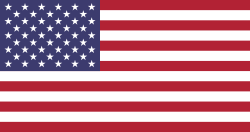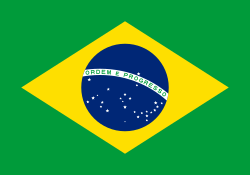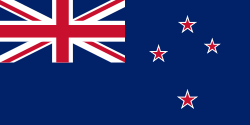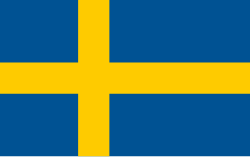Open de Guadeloupe 2014
| Open de Guadeloupe 2014 | |
|---|---|
| Datum | 31.3.2014 – 6.4.2014 |
| Auflage | 4 |
| Navigation | 2013 ◄ 2014 ► 2015 |
| ATP Challenger Tour | |
| Austragungsort | Le Gosier |
| Turniernummer | 6244 |
| Kategorie | Challenger |
| Turnierart | Freiplatzturnier |
| Spieloberfläche | Hartplatz |
| Auslosung | 32E/10Q/16D |
| Preisgeld | 100.000 US$ |
| Website | Offizielle Website |
| Vorjahressieger (Einzel) | |
| Vorjahressieger (Doppel) | |
| Sieger (Einzel) | |
| Sieger (Doppel) | |
| Turnierdirektor | Christian Forbin |
| Turnier-Supervisor | Hans-Jürgen Ochs |
| Letzte direkte Annahme | |
| Stand: 30. März 2014 | |
Die Open de Guadeloupe 2014 waren ein Tennisturnier, das vom 31. März bis 6. April 2014 in Le Gosier stattfand. Es war Teil der ATP Challenger Tour 2014 und wurde im Freien auf Hartplatz ausgetragen.
Das Teilnehmerfeld der Einzelkonkurrenz bestand aus 32 Spielern, jenes der Doppelkonkurrenz aus 16 Paaren.
Qualifikation
Die Qualifikation fand am 29. und 30. März 2014 statt. Bei dieser wurden in zwei Runden aus 10 Spielern insgesamt vier Qualifikanten bestimmt. Folgende Spieler hatten sich für das Hauptfeld qualifiziert:
- Élie Rousset
- Mateo Nicolás Martínez
- Michael Venus
- Claudio Grassi
Als Lucky Loser rückten folgende Spieler in das Hauptfeld auf:
- Tomasz Bednarek
- Tristan Meraut
Einzel
Setzliste
|
|
Zeichenerklärung
- Q = Qualfikant
- WC = Wildcard
- LL = Lucky Loser
- ITF = qualifiziert über ITF-Ranking
- ALT = alternate (Ersatz)
- PR = Protected Ranking
- SE = Special Exempt
- r = retired (Aufgabe)
- d = Disqualifikation
- w.o. = walkover
- [ ] = Match-Tie-Break
Ergebnisse
Doppel
Setzliste
|
Zeichenerklärung
- Q = Qualfikant
- WC = Wildcard
- LL = Lucky Loser
- ITF = qualifiziert über ITF-Ranking
- ALT = alternate (Ersatz)
- PR = Protected Ranking
- SE = Special Exempt
- r = retired (Aufgabe)
- d = Disqualifikation
- w.o. = walkover
- [ ] = Match-Tie-Break
Ergebnisse
| Erste Runde | Viertelfinale | Halbfinale | Finale | |||||||||||||||||||||||
| 1 | 7 | 6 | ||||||||||||||||||||||||
| 5 | 3 | 1 | w. | o. | ||||||||||||||||||||||
| 4 | 63 | |||||||||||||||||||||||||
| 6 | 7 | 1 | 7 | 7 | ||||||||||||||||||||||
| 4 | 4 | 3 | 65 | 65 | ||||||||||||||||||||||
| WC | 6 | 6 | WC | 63 | 2 | |||||||||||||||||||||
| 6 | 63 | [10] | 7 | 6 | ||||||||||||||||||||||
| 3 | 7 | [6] | 1 | 5 | 7 | [8] | ||||||||||||||||||||
| WC | 4 | 1 | 3 | 7 | 65 | [10] | ||||||||||||||||||||
| 6 | 6 | 3 | 1 | |||||||||||||||||||||||
| 5 | 3 | 3 | 6 | 6 | ||||||||||||||||||||||
| 3 | 7 | 6 | 3 | 6 | 1 | [10] | ||||||||||||||||||||
| 6 | 6 | 2 | 4 | 6 | [7] | |||||||||||||||||||||
| 1 | 2 | |||||||||||||||||||||||||
| WC | 2 | 1 | 2 | w. | o. | |||||||||||||||||||||
| 2 | 6 | 6 | ||||||||||||||||||||||||
Weblinks und Quellen
- Offizielle Homepage des Turniers
- Turnierplan Einzel auf der ATP-Homepage sowie als PDF (englisch)
- Turnierplan Doppel auf der ATP-Homepage sowie als PDF (englisch)
- Turnierplan Einzel-Qualifikation auf der ATP-Homepage sowie als PDF (englisch)
Auf dieser Seite verwendete Medien
Chinese Taipei Olympic Flag. According to the official website of Chinese Taipei Olympic Committee, Blue Sky(circle) & White Sun(triangles) above the Olympic rings is neither the National Emblem of the Republic of China, nor the Party Emblem of Kuomintang (KMT), but a design in between, where the triangles do not extend to the edge of the blue circle, as registered at International Olympic Committee in 1981 and digitally rendered in 2013. Besides, the blue outline of the five-petaled plum blossom is broader than the red one. Moreover, the CMYK code of the blue one and the Blue Sky & White Sun is "C100-M100-Y0-K0", and different from the Olympic rings (C100-M25-Y0-K0). Note that it's the only version recognized by IOC.
Chinese Taipei Olympic Flag. According to the official website of Chinese Taipei Olympic Committee, Blue Sky(circle) & White Sun(triangles) above the Olympic rings is neither the National Emblem of the Republic of China, nor the Party Emblem of Kuomintang (KMT), but a design in between, where the triangles do not extend to the edge of the blue circle, as registered at International Olympic Committee in 1981 and digitally rendered in 2013. Besides, the blue outline of the five-petaled plum blossom is broader than the red one. Moreover, the CMYK code of the blue one and the Blue Sky & White Sun is "C100-M100-Y0-K0", and different from the Olympic rings (C100-M25-Y0-K0). Note that it's the only version recognized by IOC.
Flag of Canada introduced in 1965, using Pantone colours. This design replaced the Canadian Red Ensign design.
Flag of Australia, when congruence with this colour chart is required (i.e. when a "less bright" version is needed).
See Flag of Australia.svg for main file information.















